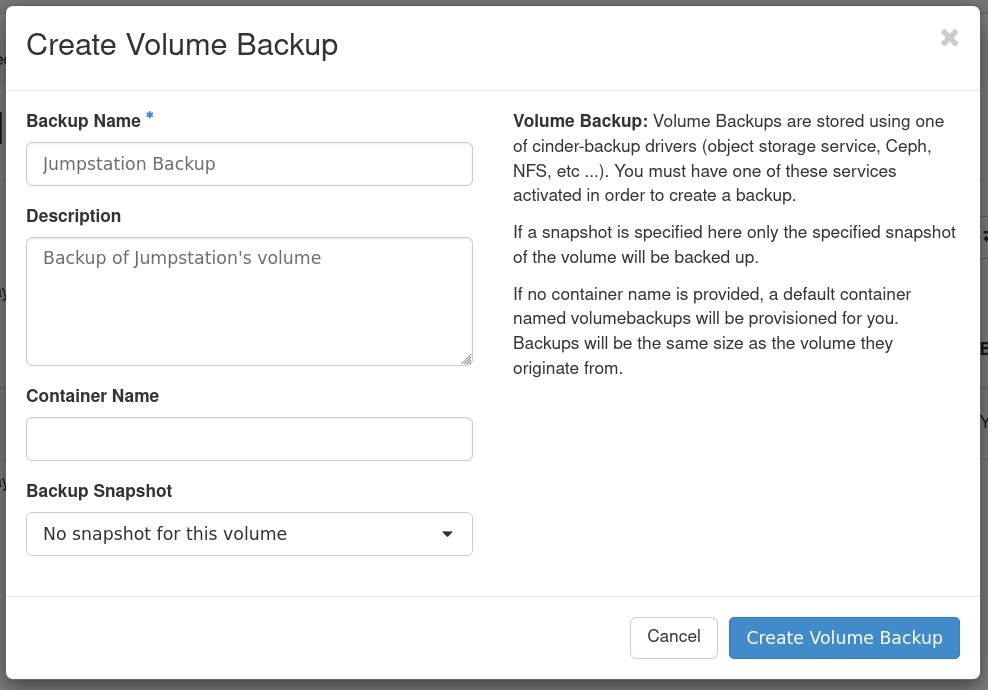Create and Restore Volume Backups
Introduction
With Private Clouds, you have the ability to create backups and snapshots of your volume data. If a volume's data goes corrupt or is removed by mistake, having a copy of that data could be invaluable. In this guide, we explain how to create and recover volume backups using Horizon.
Create a Volume Backup
Navigate in Horizon to Project -> Volume -> Volumes.

Figure 1: Volumes List
Create a backup of your volume by selecting from the drop down Create Backup.

Figure 2: Create Volume Backup Form
- Backup Name: Specify a name for the volume backup
- Description: Provide a description if necessary
- Container Name: Leave this blank otherwise the volume backup
cannot be created. Horizon tells you if this field is blank, the
backup is stored in a container called
volumebackups, but this is not the case with our configuration. With Private Clouds, all volume backups created this way are stored in the Ceph pool calledbackups. - Backup Snapshot: If applicable specify a snapshot to create a backup from
After submitting the form, you are navigated to Project -> Volume -> Volume Backups where you can see the volume you just created a backup of.

Figure 3: Volume Backup List
Test Volume Backups
Creating backup copies of your important data is only one part of having a solid backup and recovery plan. Additionally, consider testing backed-up data to ensure if something unexpected does happen that restoring your backups will actually be useful. To test volume backups, you can restore a volume backup within OpenStack alongside the original volume and compare the contents.
Restore a Volume Backup
To restore a volume backup, being by navigating in Horizon to Project -> Volume -> Volume Backups.
Next, find the volume backup you wish to restore and from its drop down on the right, select Restore Backup.

Figure 4: Volume Backup List
Choose the volume to restore to, or have the system restore the backup to a new volume.
Ceph, Volumes, and Data Durability
When volume backups are created, they are stored in your cloud's Ceph
cluster in a pool called backups. By default, the Ceph cluster is
configured with host level replication across each of your cloud's three
control plane nodes. With this configuration, your cloud could suffer
losing all but one Ceph node and still retain all of the cluster's data.
For more about how your Ceph cluster was configure, see the heading
Default Configuration for the Ceph Cluster in the
Introduction to Ceph guide.
Store Data Outside of the Cloud
Taking data backups a step further, consider storing critical data outside of the cloud. Storing data both in the cloud's Ceph cluster as well as outside of it increases the failure domain.
With Ceph you can use RBD mirroring, which effectively is a way to mirror your Ceph cluster's data to another Ceph cluster.